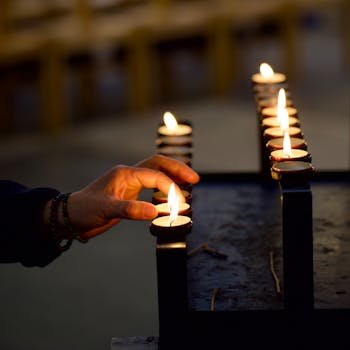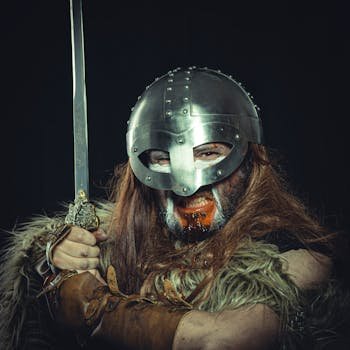Kursk: Unveiling the History, Battle & Modern City
Have you ever heard of Kursk? It’s more than just a name; it’s a city steeped in history, a battleground of immense significance, and a vibrant modern Russian hub. From its ancient roots to its crucial role in World War II and its contemporary cultural landscape, Kursk has a story to tell. This blog post will take you on a journey through time, exploring the fascinating past and present of this remarkable city. We’ll delve into the epic Battle of Kursk, examine its historical landmarks, and discover what makes modern Kursk tick. Get ready to explore the heart of Russia and uncover the captivating secrets of Kursk.
A Glimpse into Kursk’s Rich History
Kursk‘s history stretches back centuries. Its strategic location has made it a significant player in Russian history for a long time. Let’s take a look at some key milestones:
Early Beginnings and Medieval Significance
The city’s origins can be traced back to the 11th century. It was first mentioned in historical chronicles in 1032. Kursk quickly developed into an important stronghold, playing a crucial role in defending the region against nomadic incursions. Throughout the medieval period, Kursk served as a vital border town, constantly facing threats from various invaders.
- 1032: First mentioned in historical records.
- Strategic Location: Served as a crucial defensive outpost.
- Trade and Commerce: Developed as a regional center for trade.
Kursk Under Mongol Rule and Beyond
Like much of Russia, Kursk fell under Mongol rule in the 13th century. This period brought significant changes and challenges to the city. After the decline of the Golden Horde, Kursk became part of the Grand Duchy of Lithuania and later, the Polish-Lithuanian Commonwealth. However, it was eventually reclaimed by Russia, solidifying its place within the Russian state.
From Border Town to Provincial Center
Over the centuries, Kursk transitioned from a frontier outpost to a more established provincial center. It developed economically and culturally, becoming a hub for trade and craftsmanship. By the 19th century, Kursk had emerged as a significant regional city with a growing population and a vibrant cultural scene.
The Battle of Kursk: A Turning Point in World War II
The Battle of Kursk, fought in the summer of 1943, is arguably the most well-known aspect of the city’s history. This monumental clash between German and Soviet forces marked a crucial turning point on the Eastern Front of World War II. Understanding the battle’s significance requires understanding its scale and impact.
Operation Citadel: The German Offensive
The German offensive, codenamed Operation Citadel, aimed to encircle and destroy Soviet forces in the Kursk salient, a large bulge in the front line. The Germans hoped that by eliminating this bulge, they could regain the strategic initiative on the Eastern Front.
- Objective: Eliminate the Kursk salient.
- German Forces: Involved significant numbers of tanks, aircraft, and infantry.
- High Stakes: The outcome would significantly influence the course of the war.
Soviet Defenses and Counteroffensives
The Soviet forces, anticipating the German offensive, prepared extensive defensive lines. They employed deep fortifications, anti-tank obstacles, and massive artillery concentrations. The Soviets also launched powerful counteroffensives, Operation Kutuzov and Operation Polkovodets Rumyantsev, which ultimately shattered the German advance.
The Tank Battle at Prokhorovka
One of the most famous engagements of the Battle of Kursk was the tank battle at Prokhorovka. This massive clash involved hundreds of tanks on both sides and resulted in heavy casualties. While the exact outcome of the battle is still debated, it is widely considered a strategic victory for the Soviets.
The Battle of Kursk was a decisive victory for the Soviet Union. It marked the end of large-scale German offensives on the Eastern Front and paved the way for the Soviet advance towards Germany. The battle resulted in immense losses on both sides, with hundreds of thousands of soldiers killed, wounded, or missing. The sheer scale of the battle and its impact on the war effort cemented its place in history.
Modern Kursk: A City Reborn
Today, Kursk is a thriving modern city with a population of over 450,000. It has rebuilt itself from the devastation of World War II and has emerged as an important industrial, educational, and cultural center in Russia.
Economy and Industry
Kursk‘s economy is diverse, with significant contributions from manufacturing, agriculture, and services. The city is home to several large industrial enterprises, including chemical plants, engineering works, and food processing factories. The surrounding region is also known for its rich agricultural land, which supports a thriving agricultural sector.
Education and Culture
Kursk is a major educational center, with several universities and research institutes. These institutions contribute to the city’s intellectual and cultural life. The city also boasts a vibrant cultural scene, with numerous theaters, museums, and art galleries. Major universities include Kursk State University and Southwest State University.
Points of Interest and Tourism
Visitors to Kursk can explore a variety of historical and cultural attractions. Some popular destinations include:
- Kursk State Regional Museum of Archaeology: Showcasing the region’s rich history.
- Kursk Victory Memorial: A tribute to the heroes of the Great Patriotic War (World War II).
- Znamensky Cathedral: A beautiful example of Russian Orthodox architecture.
- The Triumphal Arch: Erected in honor of the victory in the Battle of Kursk.
Visiting Kursk: Practical Tips:
- Visa Requirements: Check visa requirements based on your nationality before traveling.
- Language: Russian is the primary language. Learning basic Russian phrases will be helpful.
- Currency: The Russian Ruble (RUB) is the local currency.
- Transportation: Public transportation is available, including buses and trams. Taxis are also readily available.
- Accommodation: A range of hotels and guesthouses are available to suit different budgets.
Kursk: A City of Resilience and Remembrance
Kursk stands as a testament to the resilience of the human spirit. From its ancient beginnings to its pivotal role in World War II and its vibrant modern-day existence, the city has overcome numerous challenges and emerged stronger each time. The Battle of Kursk remains a powerful reminder of the sacrifices made during the war, and the city’s museums and memorials serve as poignant tributes to the fallen. By understanding Kursk‘s history, we gain a deeper appreciation for the complexities of the past and the enduring strength of the human spirit. Consider exploring Kursk, either virtually or in person, to experience its rich history and culture firsthand.









